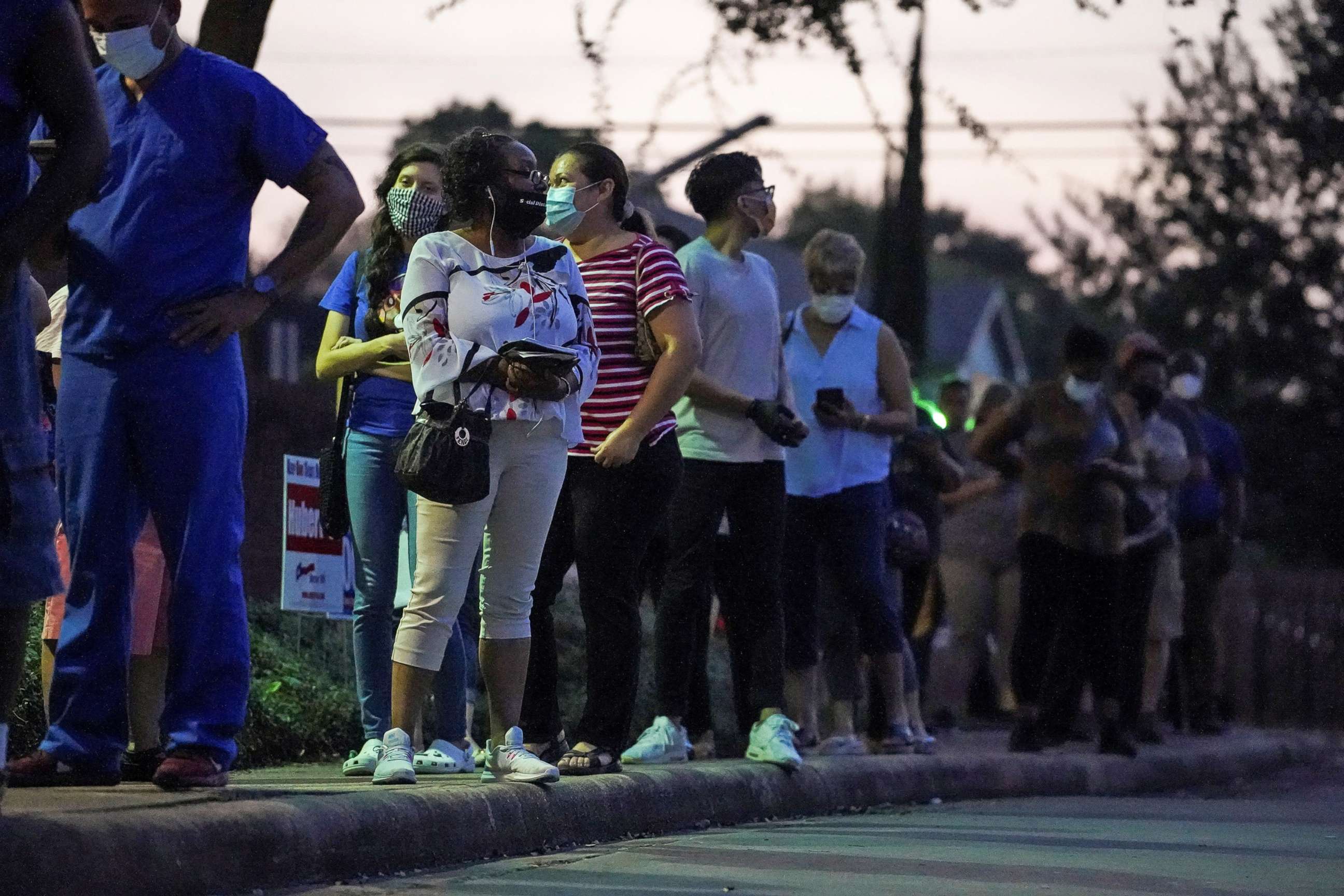Texas Democrats chart path to turn Lone Star State blue
After weather crisis, the party sees a chance to mobilize voters before 2022.
In the aftermath of the winter weather crisis that swept Texas and inflicted devastating repercussions on constituents, Democrats see an opportunity to mobilize voters ahead of the 2022 midterm elections and beyond. For many state officials, Sen. Ted Cruz’s decision to head to Cancun rather than remain in his home state during the storm embodied the failures of leadership Democrats say will continue if the state remains in Republican control, as it has been for more than two decades.
“This is an example of what happens when elections turn out the wrong way -- elections have consequences,” Gilberto Hinojosa, chair of the Texas Democratic Party, said during a virtual press call Friday. "And people in the state of Texas are experiencing consequences of the elections in the last 25 years."
Hinojosa was joined by fellow Democrats Rep. Joaquin Castro, former Housing and Urban Development Secretary Julián Castro, Rep. Marc Veasey, Rep. Sheila Jackson Lee and Rep. Sylvia Garcia, all of whom lambasted their state's Republican leaders’ responses to the widespread devastation Texans are facing.

“When you don't care about [the people of Texas] -- to the point of like Ted Cruz, where you are willing to walk away and go to a resort in Mexico, because you really don't care about them -- that epitomizes what the Republican leadership of the state has been all about with respect to the beautiful people in this state,” Hinojosa added.
Cruz’s current term isn’t up until 2025, but the latest criticism, paired with the 2.6 percentage point gap that separated his victory over Democrat Beto O’Rourke in 2018, offers Democrats a timely catalyst to chart the path to winning future political contests.
Despite a record voter turnout in the last campaign cycle, the Democratic party's biggest hurdle was that its “operation did not activate Democratic voters to the same extent Republicans were able to activate their base," according to the Texas Democratic Party’s 2020 election autopsy titled “2020 Texas Election Retrospective,” which was obtained by ABC News.
“The pandemic prevented us from getting the most out of our most powerful competitive advantage: our volunteers,” the review, which was written by Hudson Cavanagh, director of data science for the Texas Democratic Party, stated. "We struggled to reach voters for whom we did not have phone numbers, who were disproportionately young, rural and folks of color."

Although the review found room for optimism in citing that “Latino voters, despite worrying trends, did not abandon Democrats,” it also referenced a need for the party to specifically focus on connecting with Latino Texans both inside and outside of the Rio Grande Valley -- a region whose 2022 contests could impact Democrats retaining control of the House. Republicans are eyeing races in the area and announced several pickup opportunities across the southern part of the state earlier this month.
Pandemic conditions also hindered Democrat efforts to reflect support at the ballot box. According to the review, “Democrats rely on direct voter contact work to stimulate turnout,” but the party’s 2020 field work was limited “by two factors: inability to do in-person canvassing and inefficient targeting.”
“Phone quality data was particularly lacking among low to moderate propensity voters, making it hard to reach those who were our top strategic priority to reach,” Cavanagh wrote.
The report conceded that Texas Democrats “need to massively expand our voter registration ambitions” and stated that over the course of the two years between the 2018 midterm elections and the 2020 general election, Texas Democrats “lost ground in terms of voter registration, losing about 26,000 net votes.” Going forward, the party expressed confidence that there are “more than enough potential registrants to flip the state.”

Democrats need to achieve the goal of registering and turning out 100,000 to 150,000 more Democrats per cycle to the polls than Republicans, according to the data outlined in the report.
“The goal is not to win one individual election,” the review stated. "With sufficient investment and ambition, Texas can be a reliably Democratic state in the next decade."
In the meantime, Democrats say they are planning to lay the groundwork to mobilize voters through policy that springboards off the winter storm crisis. On Friday, Veasey said he plans to use his position on the Energy and Commerce Committee to work with Democratic Rep. Lizzie Fletcher in hopes of rectifying the state’s power infrastructure failures. Fletcher’s district is one of the areas the National Republican Congressional Committee said it aims to target in 2022.
“We need to ensure that our energy production facilities are prepared for an event like this in the future, and in the long run -- meaning in the elections to come -- we need to make sure that we put government in the hands of people who actually care about good government,” former Secretary Castro said.




